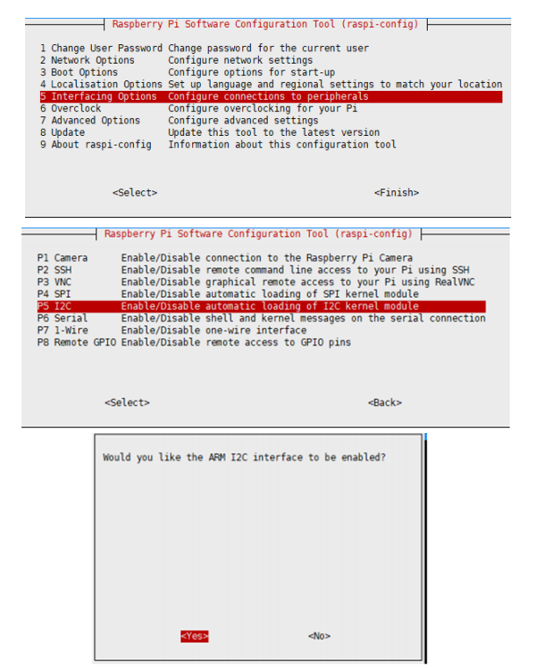Template: UV Sensor C Raspberry Pi Guide
From Waveshare Wiki
Revision as of 08:16, 6 September 2022 by Eng52 (talk | contribs) (→Download and run the test demo)
Working with Raspberry Pi
This demo uses a Raspberry Pi 4 Model B, which provides RPI (Python) library demos.
Hardware connection
Enable I2C interface
- Execute in terminal:
sudo raspi-config #Select Interfacing Options -> I2C ->yes to start the i2C kernel driver
- then restart the raspberry pi
sudo reboot
Installing Libraries
- Install BCM2835, open the Raspberry Pi terminal, and run the following command
wget http://www.airspayce.com/mikem/bcm2835/bcm2835-1.60.tar.gz tar zxvf bcm2835-1.60.tar.gz cd bcm2835-1.60/ sudo ./configure sudo make sudo make check sudo make install
- install wiringpi
sudo apt-get install wiringpi #For Raspberry Pi 4B may need to be upgraded: cd /tmp wget https://project-downloads.drogon.net/wiringpi-latest.deb sudo dpkg -i wiringpi-latest.deb gpio -v
Download and run the test demo
sudo apt-get install p7zip-full wget https://www.waveshare.com/w/upload/a/ab/UV_Sensor_C_Code.7z 7z x UV_Sensor_C_Code.7z -r -o./UV_Sensor_C_Code sudo chmod 777 -R UV_Sensor_C_Code
python program
Execute in the UV_Sensor_C_Code directory:
cd UV_Sensor_C_Code/RPI sudo python LTR390.py
- Note: The sensor has 2 working modes, measuring light intensity and UV light respectively.
- Note: The upper and lower thresholds of the interrupt are set by the program. If it is higher than or lower, it will trigger, and the INT pin will output a high pulse.

